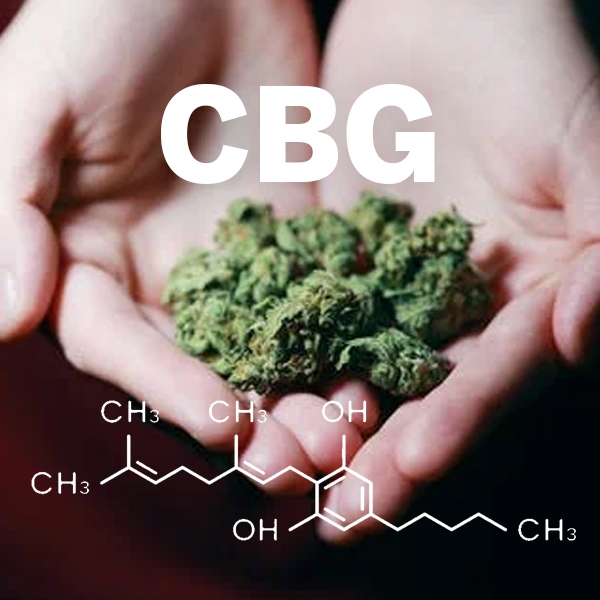CBG
What is CBG?
CBG is short for cannabigerol. CBG is an important phytocannabinoid in large part because it is the precursor for several other phytocannabinoids, including CBD, CBN, and CBC, all of which develop naturally within the growing hemp plant. In this way, CBG is like a building block for other beneficial plant compounds. Some CBG does remain as CBG, however, but generally speaking, that amount is quite small. Because it’s usually found in such low levels, CBG was regarded as a minor cannabinoid since its discovery in 1964. Until now, that is!
As time has gone on, and as scientists continue to discover more and more about the complex chemistry of the hemp plant, research suggests that CBG may have some unique qualities that could prove to be particularly beneficial. And just like CBD, CBG is non-intoxicating, so it will not make you feel “high.”
What Does CBG Do?
As already mentioned, CBG helps make CBD and CBC inside the growing hemp plant. Even though they are all phytocannabinoids, these substances have different chemical structures and appear to have both shared and different effects. Most phytocannabinoids increase the production of our own endocannabinoids by interacting in various ways with our endocannabinoid system (ECS). The primary receptor sites of the ECS are called CB1 and CB2. As a general rule, CB1 receptors are found mostly in our central nervous system and spinal cord, and CB2 receptors are mostly located in our organs and immune system.
Research indicates that CBG interacts with CB1 receptors in a way that appears to balance the effects of other cannabinoids. It also seems to interact strongly with CB2 receptor sites(1) which suggests that CBG may turn out to play a significant role in regulating bodily systems. Furthermore, CBG may be unique among the phytocannabinoids in its ability to interact with a range of the body’s receptor sites in addition to those specific to the ECS.(2)
More research is needed to clarify both how CBG works and the implications, if any, for our body systems. Currently, there haven’t been any studies of CBG with humans, but in vitro studies (done with cells in a test tube) and animal studies highlight some promising possibilities.
What’s the Main Potential Benefit of CBG?
Dozens of scientific studies have discovered many potential benefits for helping support health, but what is the main potential benefit of CBG?
Everyday Anxiety and Stress
It is not surprising to find out that CBG also contributes to easing everyday anxiety and stress. The findings of an animal study suggest CBG may help with everyday anxiety, stress, and muscle tension by modulating the effects of a brain chemical known as GABA This may be another example of CBG interacting with other body systems besides the ECS. The results of another animal behavior study showed signs that CBG may have the potential to uplift mood.
How Do I Take CBG?
Advances in science and manufacturing techniques mean that ensuring higher levels of CBG in hemp extracts has become more feasible. CBG-dominant hemp extracts and extracts with higher CBG content will probably become increasingly available as oils and in ingestible and topical forms. The benefit of using CBG oil is that you can gradually increase (or decrease) the amount of CBG you take each day based on how your body is responding to it. If research continues to build on the seemingly positive findings of CBG, you may find topical preparations helpful as well.
How Will CBG Make Me Feel and How Long Does It Take to Work?
The short answer to both questions is the same as it is for CBD, “It depends.” It depends on many factors such as the starting point of your body’s systems, as well as the concentration of CBG you are using. The bottom line is that CBG may affect everyone a little differently, and work gradually over time. Dietary supplements like Charlotte’s Web™ are crafted to work with your body naturally. Results come by way of steady improvement, which will make beneficial changes more sustainable each step of the way.
To Sum It All Up
Research on CBG has historically been more difficult to do because most CBG naturally transforms into other phytocannabinoids while still in the young hemp plant. This has meant that only limited amounts of actual CBG were available to study. But that situation has begun to change in recent years. More research is needed, especially clinical trials with people, as all research on CBG thus far has involved isolated cells or laboratory animals.
Despite that, the findings of CBG look highly promising, and the scientific understanding of how this rare phytocannabinoid works will continue to grow. There are calls for further research to better understand how lesser-known cannabinoids, like CBG, affect the body.
Even though CBG appears to have unique effects, and interacts with a range of receptor sites in addition to those found in the ECS, it’s likely that all cannabinoids work together in complementary and overlapping ways to promote a balanced response within the body. For that reason, we recommend full-spectrum hemp extracts precisely because they contain the many beneficial compounds the hemp plant has to offer, which will work together to enhance your body’s positive response.

